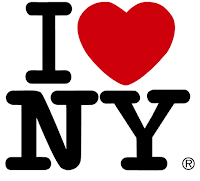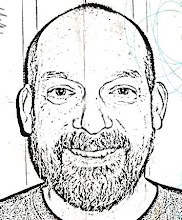A few weeks ago in the
New York Times, Joe Nocera
wrote about how Starbucks founder and chairman Howard Schultz wants to save the "Starbucks experience." The article quotes from a
memo that Shultz wrote to his executives complaining that Starbucks stores no longer have the atmosphere of neighbourhood coffee shops, but feel more like chain stores. He wants his executives to find a way to recapture the "romance and theatre" that was once Starbucks.

Duh! In case Howard Schultz hasn't noticed, Starbucks is a chain, and a pretty big one, with maybe 15,000 stores. I don't think that it is possible to make a 15,000 store chain not seem, well, pretty dull and pre-fabricated.
I do not buy coffee at Starbucks very often in London (I usually go to Cafe Nero) but during a recent trip to New York I visited several different Starbucks stores. To be sure, these stores in Manhattan are not places to relax and linger over a latte or cappuccino while contemplating life; they are high-volume coffee factories. While the process seems focused on getting the masses served and out the door quickly and efficiently, the inefficient (and sometimes incompetent) staff and clueless customers make this impossible.
What passes for atmosphere is a room full of fidgety and grumpy people waiting to get served while others scramble to grab a one of the too-few seats when they infrequently become free. Certainly, I did not see any evidence of "romance and theatre" and any Starbucks store I visited and none even come close to achieving a neighbourhood coffee house feel.
Now to be fair, I did not visit Starbucks much during the years I lived in New York, so maybe they have always been like this. I do not go to many stores in other parts of the country very often (but the ones I have visited do seem sterile to me), so maybe this is just a "New York effect" to cater to the fast-paced demands of local customers.
One very important thing that I did notice about Starbucks in New York: while hundreds of cafes and deli counters sell cheap take-away coffee in cardboard or styrofoam cups, Starbucks is the only game in town for premium coffee and espresso.

That surprised me. London, not historically known as a big coffee drinking city, hosts at least four premium coffee chains and numerous independent coffee bars. The chains are mostly the same, although subtly different. Starbucks in London do not seem as factory-like as their New York counterparts, but Cafe Nero offers better coffee and, apart from the servers' zombie-like repetition of "would you like any pastry or muffins?" (the coffee house equivalent of "do you want fries with that?"), offers a better, more relaxed atmosphere.

Bottom line, there is a huge opportunity for somebody to fill a gaping hole in the New York high-end coffee market. The timing is right, with Starbucks floundering, and as a colleague of mine once said, when your competitor is drowning, stick a hose in his mouth.
I gotta believe that a top-quality espresso bar with comfortable seating, a relaxed atmosphere, real (not cardboard) cups and competent, efficient service would succeed in a New York minute.
At least I would go there!
 This time, however, I did not feel a sense of greatness or pride. After the last seven years, I now looked at these edifices with sadness, cynicism, disappointment and anger at what America has become.
This time, however, I did not feel a sense of greatness or pride. After the last seven years, I now looked at these edifices with sadness, cynicism, disappointment and anger at what America has become.









 Besides, the short days and long nights make this a good time to tackle long-postponed projects, catch up on reading and think great thoughts.
Besides, the short days and long nights make this a good time to tackle long-postponed projects, catch up on reading and think great thoughts.


